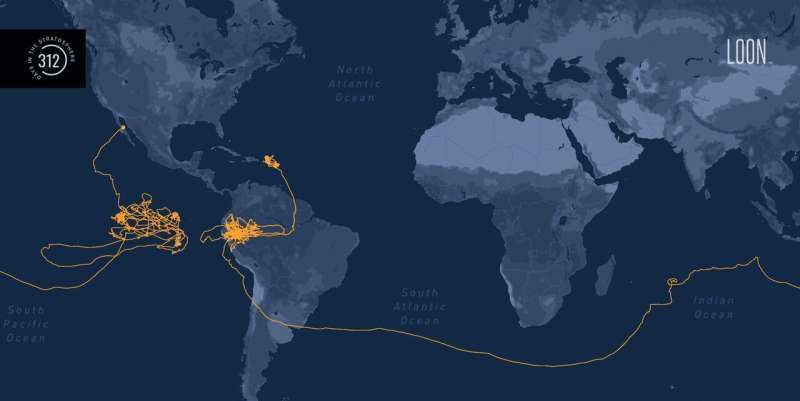Credit: Loon
Google parent Alphabet has announced that its Loon team has broken the record for the longest stratospheric flight duration, staying aloft for 312 consecutive days. The announcement was posted on the Loon blog, where the team also outlined the history of the project and its goals for the future.
The Loon project was started back in 2013 with the ambitious goal of providing cellphone service to people in remote areas by using balloons as cell towers. Since that time, the team has spent a considerable amount of time perfecting very high-altitude balloon flight. On their blog post, they note that they have focused their efforts on improving sustained flight—their first balloons flew for just a few days. They note also that all of their balloons are the same in one way: They carry technology to transmit two-way communications with ground-based users.
To that end, they have learned how to keep the on-board batteries warm enough to continue functioning in the very cold temperatures encountered in the stratosphere. Each balloon also carries a solar panel to provide electricity for the hardware. The team has also very carefully studied the material used to make the balloons, noting that a very small hole can cut a trip short very quickly. They point out that they recover almost every one of their balloons no matter how remote the area where it comes to rest. Each balloon is scanned after its trip using what the team describes as "the world's largest flatbed scanner."
The team launches a new balloon approximately once a week and at any given time has approximately 100 of them in flight at any given time. Each is monitored very closely by ground crew to assist with its flight—altitude changes are made on a regular basis, for example, to reduce exposure to extremely cold temperatures. The Loon team has also co-founded the HAPsAlliance—a group of like-minded companies and individuals dedicated to bringing connectivity to people everywhere.
The balloon making the record-breaking trip was launched from a site in Puerto Rico back in May of last year. It soared over South America for a while, primarily over Peru, then began a trip that took it nearly all the way around the globe. It landed in Baja, California this past March.
© 2020 Science X Network






















